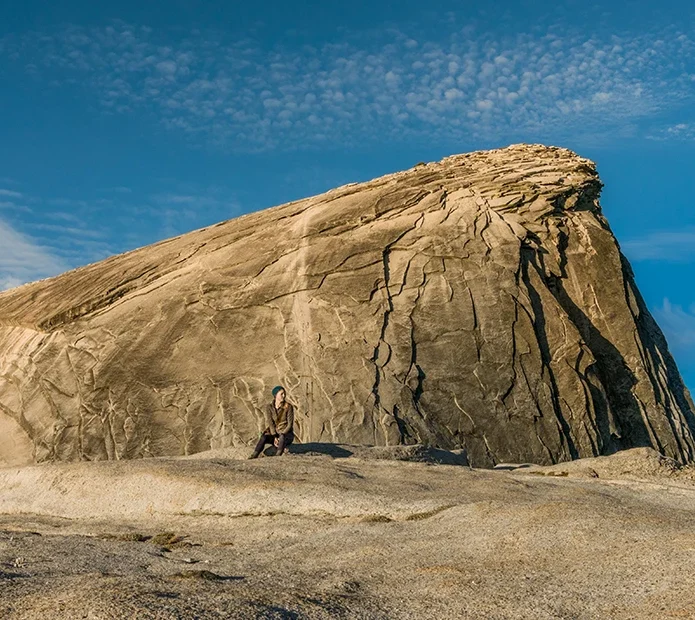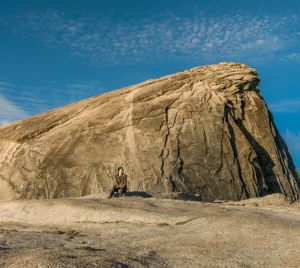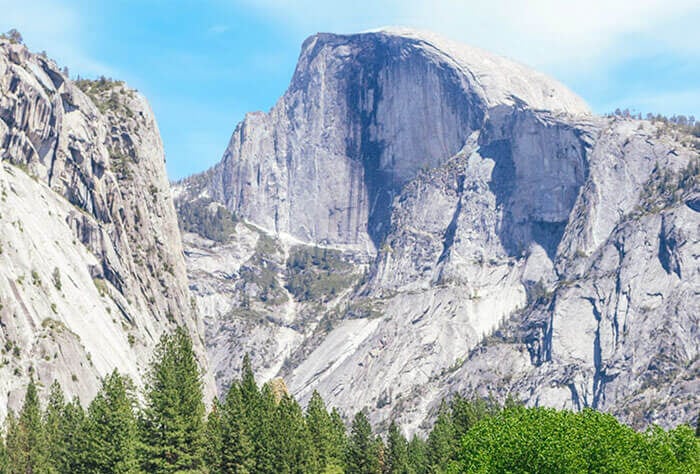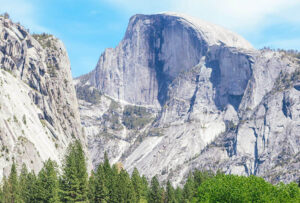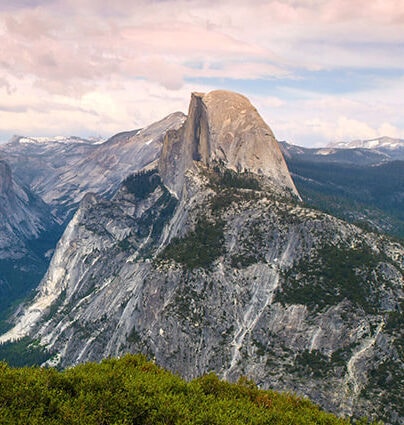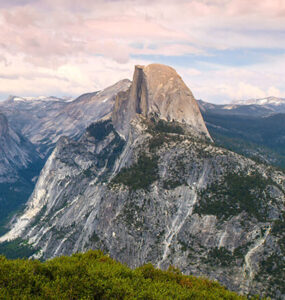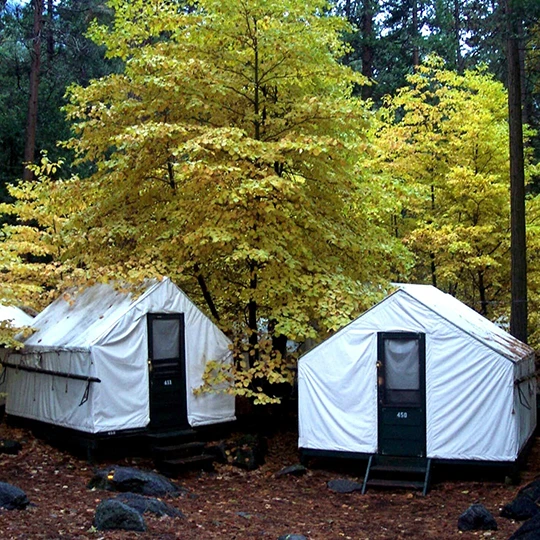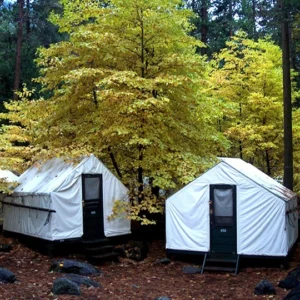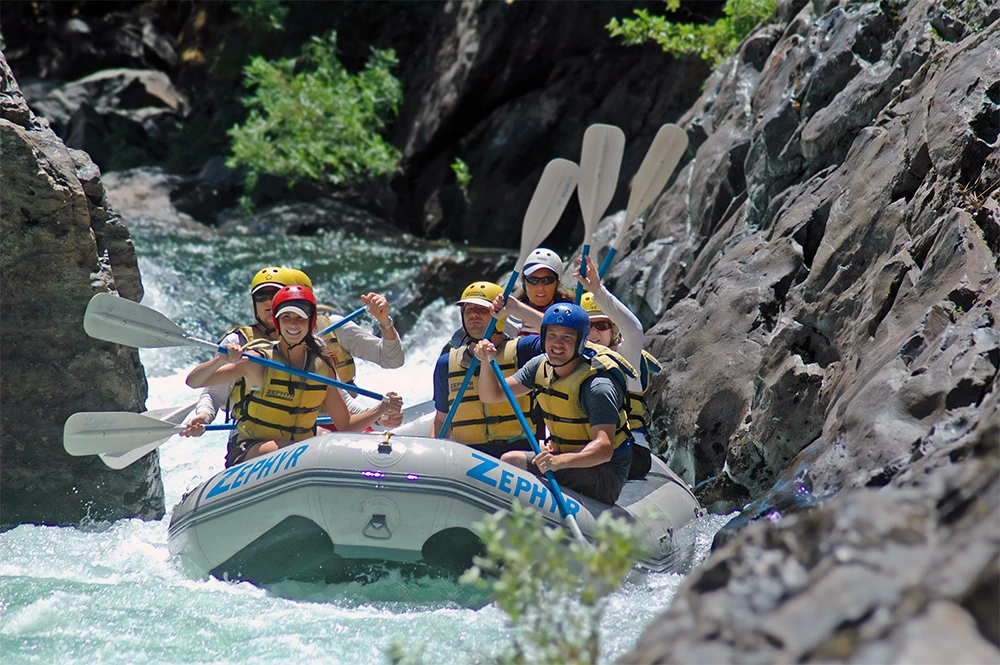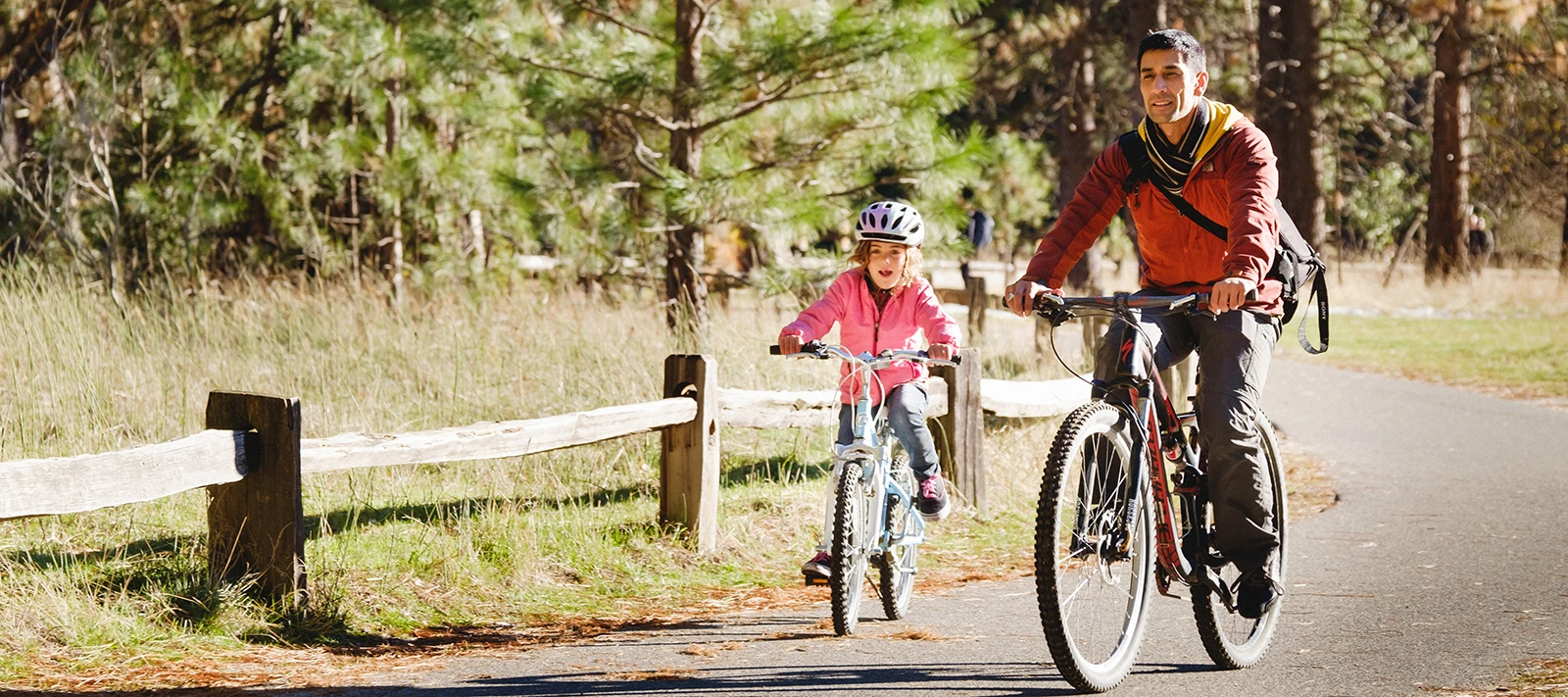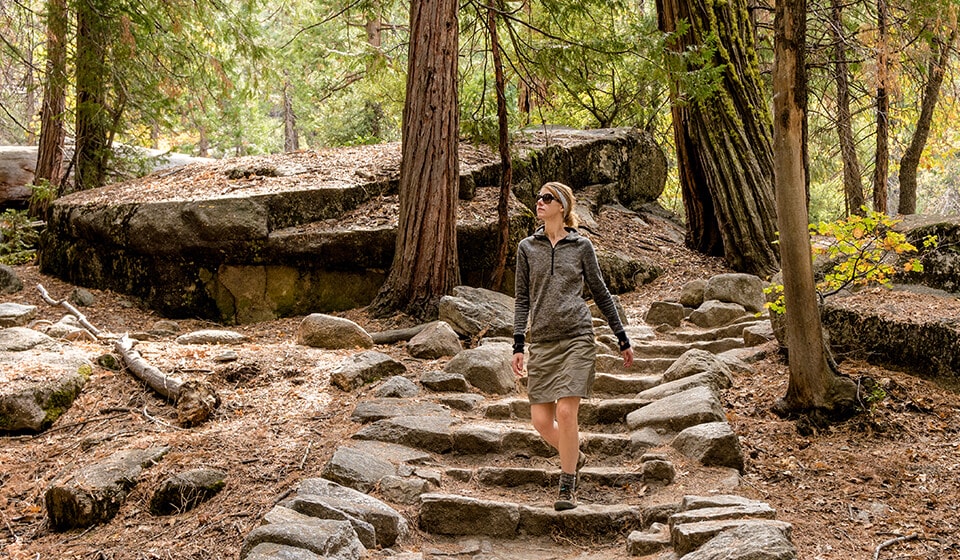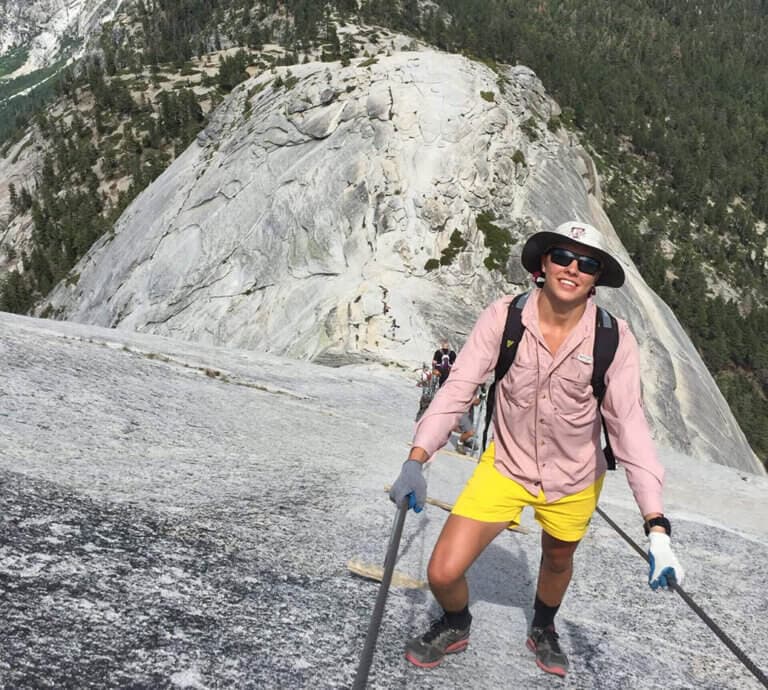
The Half Dome cables are the crowning achievement of one of the most famous hikes in Yosemite National Park, the Half Dome Hike.
Coming at the far end of a 14 to 16-mile (22.5 – 26 km) round-trip hike, the infamous Half Dome cables span the last 400 feet of the 4,800-foot (nearly 1500 m) elevation gain from Yosemite Valley. Wild, airy, and not for the faint of heart.
The History of the Half Dome Cables
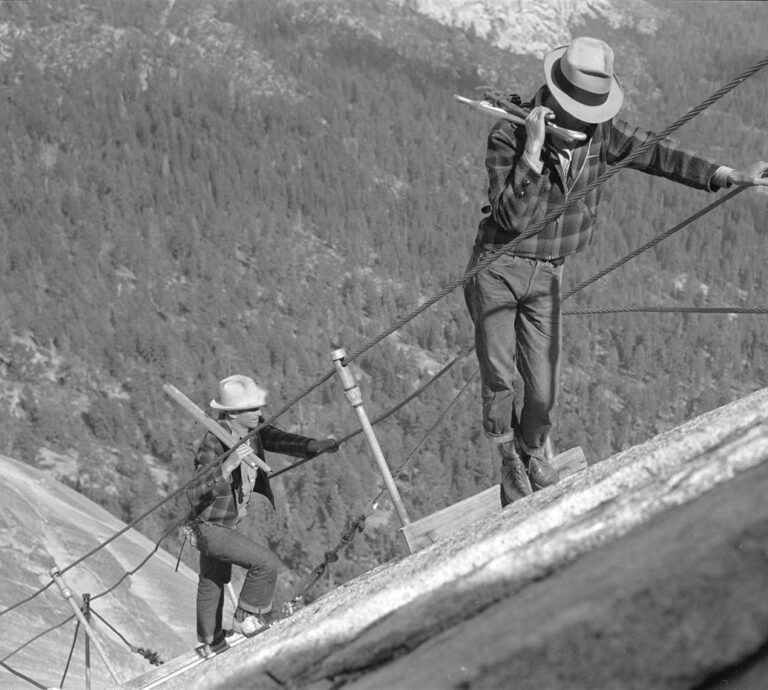
Shortly after the celebrated geologist, Josiah Whitney, made his infamous claim that no one would ever summit Half Dome, a mountaineer, and local Yosemite guide, George Anderson, proved him wrong. But it wasn’t easy.
In the early attempts, Anderson tried climbing Half Dome in his boots but they slid on the polished granite. An attempt with socks fared no better. He tried tying some sacking on his feet, but that was too slippery too. He found some success smearing his bare feet with pine pitch for extra traction. Unfortunately, that was too sticky, and getting his feet unstuck would throw him off balance. That almost killed him several times.
Finally, he returned with drills, a hammer, iron eye bolts and he drilled a series of holes to the top. But don’t think power drills here – Anderson had to hold the drill bit to the rock and pound on it repeatedly with a hammer, slowly turning the bit, until he excavated a hole. Then he pounded a wooden pin and an eye bolt into the hole, and climbed up to stand on that to begin drilling the next hole.
At 3 pm on October 12, 1875, he finally made it to the top.
After the first ascent, he knotted 6 strands of rope together with a knot every foot and fastened that to the eye bolts so that he could bring other people up with him. Sally Dutcher became the first woman to climb Half Dome later the same month, accompanied by George Anderson and Yosemite’s first guardian, Galen Clark.
The metal cables that we think of today were first installed in 1919.
For another peek into George Anderson’s life, visit his cabin at the Yosemite History Center in Wawona. The Anderson Cabin was originally built in the 1870s in what is now Foresta, where George would spend his winters.
How to Climb the Half Dome Cables
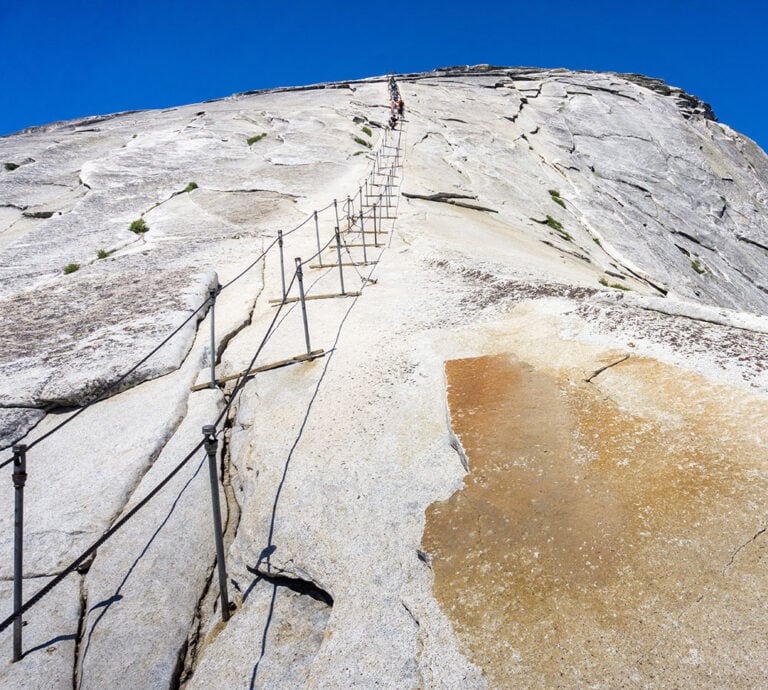
What to expect from the cables
When they are “up”, the long metal cables fixed to Half Dome are supported by posts that hold the cables up. Plus, a board on the ground between each set of posts provides some traction and a place to stand and rest.
Most people have to take one or two steps on slippery granite to get from one board to the next, using their grip on the metal cable to keep them in place as they make the move. This is usually the hardest and least secure part.
The cables are close enough together that most people can easily reach across to hold one cable in each hand, and far enough apart to allow passing if each party steps aside and holds onto just one cable.
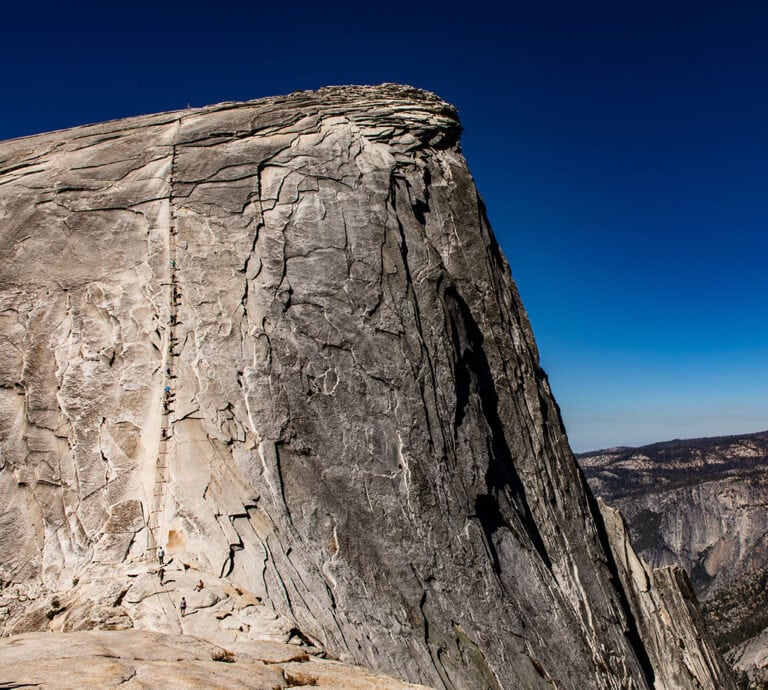
Permits for the Half Dome Cables
Permits are required to hike the cables whenever the cables are ‘up’, which is usually between the Friday before Memorial Day and the second Monday in October, but depends on conditions.
There are a few different ways to get a permit for Half Dome – online through recreation.gov.
- Apply for the preseason lottery in March.
- A daily lottery two days before your intended hiking date accommodates more spontaneous trips.
- It’s also possible to make a Half Dome hike part of a longer backpacking trip leaving from certain trailheads.
For more information about the Half Dome hike, visit www.nps.gov/yose/planyourvisit/halfdome.htm.
Tips for Making the Climb
- Be patient – with yourself and others. Remember, according to Josiah Whitney, you’re setting off to do the impossible.
- Allow faster hikers to pass when possible. Once you get established on a board, make time to allow faster hikers to pass.
- Stay between the cables. Think of them as very thin guard rails. Better to have one on each side of you.
- Wear broken-in boots or shoes with good traction. New footwear on such a long hike is a recipe for blisters. And don’t underestimate how helpful good traction will be on the trail even before you get to the cables.
- Bring gloves – and pack them out. Gloves can help to increase your grip on the cables and protect your hands. But don’t leave them behind. Hundreds of pounds of rotting gloves left at the base of the cables are gross.
- Ensure you have enough water. NPS recommends that you carry 1 gallon (4 L) per person for the Half Dome hike. Water is heavy. To save weight in your pack, plan to refill your water containers along the way. The only treated water is just past the Vernal Fall Footbridge, but you can refill from the Merced River up to Little Yosemite Valley if you have water treatment tablets or a giardia-rated water filter. Just be sure you have enough to get you up and back down the sun-baked subdome and Half Dome cables.
- Keep your eyes on the weather. We get it. It’s hard to get a permit for Half Dome, and it can be tempting to push on even when storm clouds are building or the ground is wet. Don’t. We promise you that it’s not worth it.
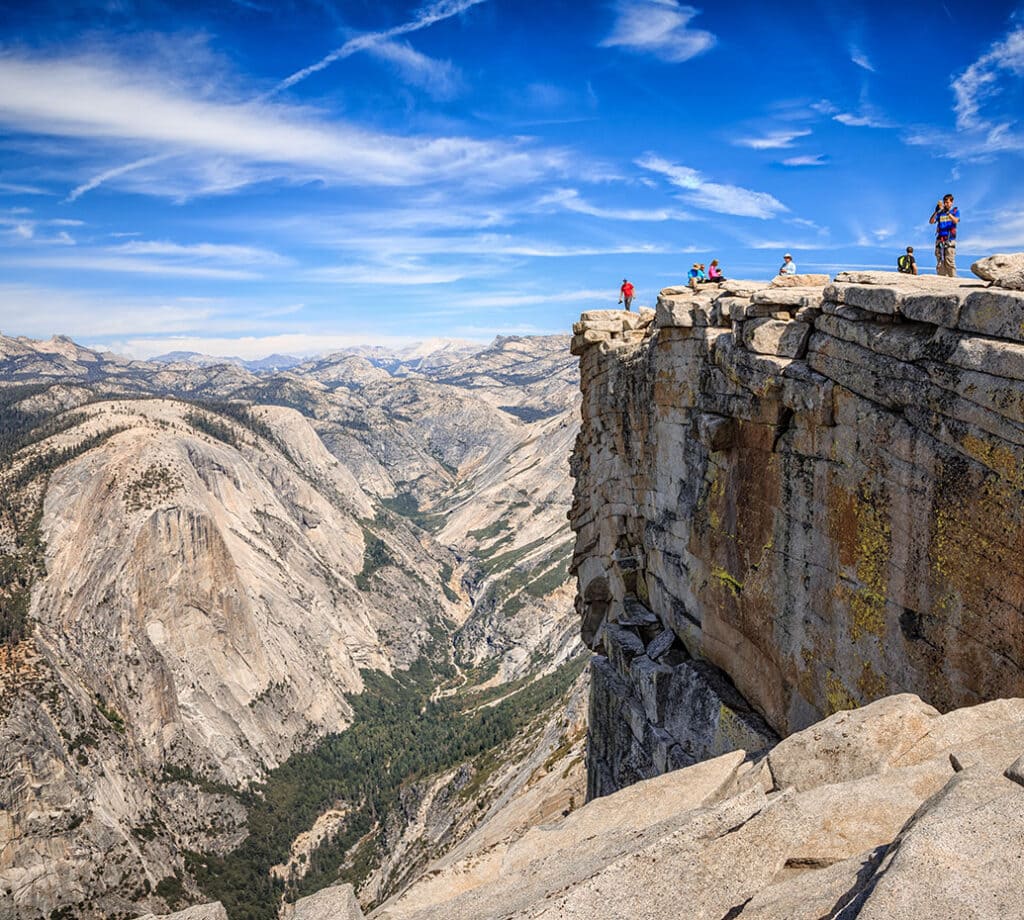
RISING 5,000 FEET ABOVE THE YOSEMITE VALLEY
HIKING HALF DOME
The Half Dome Cable Hike will take hikers about 10 – 12 hours to complete, there and back, depending on skill level and weather. Undertakers of this trail will be rewarded with views of Vernal Fall, Nevada Fall, Liberty Cap, and of course, Half Dome. Once you reach the subdome and summit, you will be blown away by the magnitude and panoramic views of both the Yosemite Valley and the High Sierra.
Find out more about hiking Half Dome.
